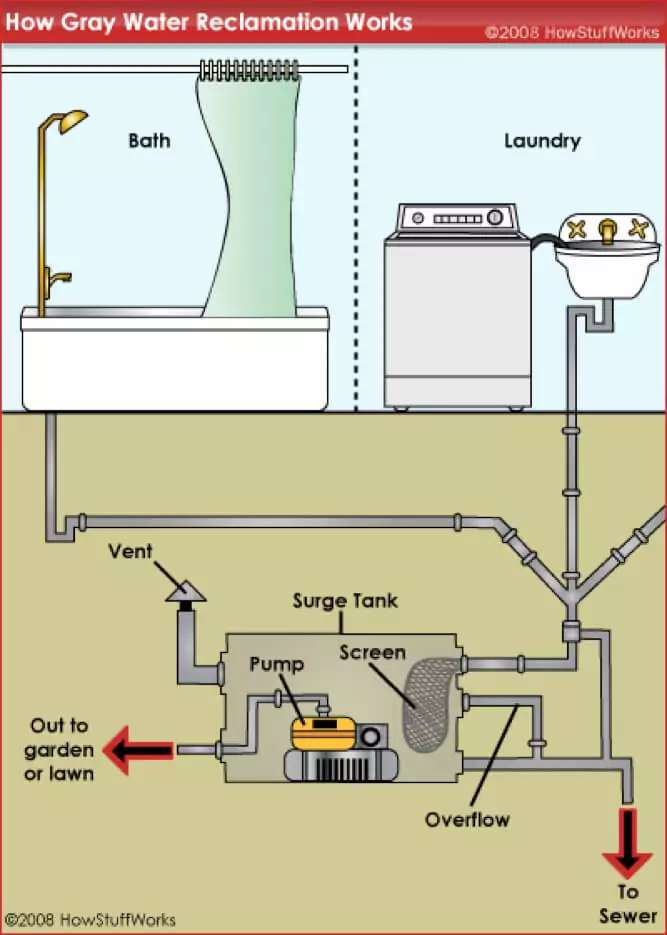Greywater Recycling
Recycling greywater is a great eco-friendly practice to reduce the water going into urban sewage treatment facilities, protecting one of the earth’s most sacred natural resources–water. The specific ways to filter and treat greywater may vary, but there are commonalities between all methods.
What is greywater?
“Greywater” is domestic wastewater that’s drained from household sinks, showers, bathtubs, and washing machines. Unlike water in septic pipes, it’s a resource that can be treated and filtered and then reused.

With Canadians using, on average, over 300 litres of wastewater per day, there’s a lot of water going down drains. The big culprits of water use in a Canadian household are showers and baths. Just take a look at the diagram below to see how it all adds up. So if greywater from showers, baths, and bathroom faucets sinks can be reused, it’s only beneficial for the environment to do so.
The diagram shows water consumption for a typical Canadian household. Note: the amount of water from the bathroom sink and shower is almost the same amount as all of the water used in toilet flushing.
Greywater Recycling Process
Greywater recycling requires a double-piped drainage system installed in the home. The water that goes through this system is filtered and purified for use. While the benefits of recycling may not be seen with the initial investment, there are great savings for the future. The return on investment can be seen as utility bills increase and water shortages become more common across the world.
Note on Greywater: While greywater can be reused, water from kitchen sinks or dishwashers is generally not recycled as it contains substantial amounts of grease and organic matter. Water from toilet flushing, known as blackwater, is obviously excluded as well.
It is not that easy to make the right choice.
Your sink must have the same number
of holes as your faucet.
We make it easy.
Trends Update
Do you want to receive information on exciting products and promotions from Kitchen & Bath Classics and Wolseley Studio?





